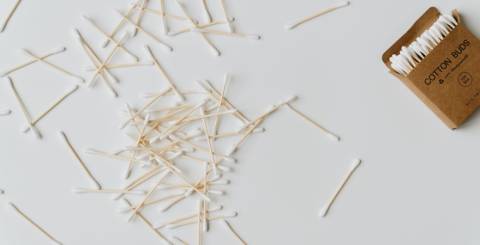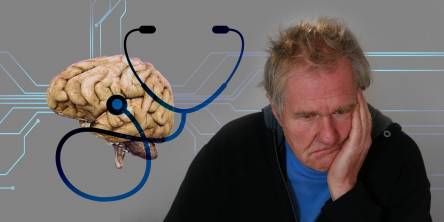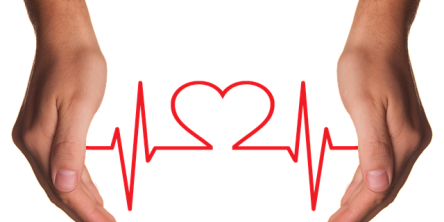Effective and Safe Ways to Clean Your Ears

When it comes to personal hygiene, ears aren’t usually something people tend to worry about. You may give them a quick rinse while in the shower, and then not think twice about it, that is until they start bothering you. Ears are generally thought of as self-cleaning, as earwax tends to soften on its own and not build up. But once in a while, ears can start to feel irritated, blocked, tight, or even as though there is pressure building inside.
All of these symptoms could be signs that you need to give them a good cleaning. But before you go using a cotton-tipped swab to “clean out the wax”, you’ll want to stop and look at these tips. The fact is that sticking a swab in your ear only works to push the wax in further and compact it; you also risk damaging your ear. Here’s a look at some effective and safe ways to clean your ears so that they stay comfortable and in good health.
Why Should You Be Concerned About Earwax Buildup?
Perhaps you've never tried removing earwax before and didn't realise this was something you needed to be concerned about. For many, this will never be an issue but for others, earwax buildup may happen occasionally. The reason it's important to remove buildup is that it keeps the ear canal healthy, clean, comfortable, and germ-free.
Earwax is a normal substance that builds in your ears, and it is supposed to pass out on its own. If this doesn't happen, the wax starts to build and even become impacted. If there is a large buildup, it can also negatively affect a person's ability to hear properly.
Who Is Prone to Earwax Buildup?
Earwax buildup can happen to anyone, but some factors make it more likely that you'll suffer from this issue.
Some of the factors that can contribute to earwax buildup include:
- Age - buildup is more common as a person ages
- Producing dry or hard earwax
- A bony growth on the outside of the ear canal
- Hairy ear canals
- Narrow ear canals
These are naturally occurring factors, but there may also be things you're doing that lead to buildup. Anyone who uses a hearing aid may be at a bigger risk of getting a buildup. If you use earplugs often, or earbuds rather than headphones – again, you increase your risk of buildup.
What Are the Common Signs of Earwax Buildup?
Because you can’t look into your ear canal yourself, it can be hard to know if you have earwax buildup. Experts often cite a few signs and symptoms, but it’s best to see a healthcare professional to know for sure if there is buildup.
Some of the most common signs of earwax buildup include:
- Irritation in the ear
- A feeling of pressure
- Trouble hearing properly
- Dull earache
- Ear infections
- Itchiness in the ear
- Tinnitus
- Vertigo
Once the earwax is removed, each of these symptoms will disappear.
Use Eardrops Meant for Wax Softening
The first step that is usually recommended is to use eardrops meant to soften the wax. The idea is that once the wax softens up, it will release from the ear canal on its own. Keep in mind that using drops means it may feel worse for the first few days before you start seeing results.
You may notice there are a variety of eardrops available, and all have their pros and cons. The most common ones to use are almond oil, olive oil, or eardrops that have sodium bicarbonate in them. While generally safe to use, those who have a perforated eardrum should not be using drops of any kind for earwax removal. It's always a good idea to talk to your pharmacist about what product to use and how to use it properly.
Ear Irrigation Can Be More Effective Than Drops
Perhaps you've tried drops and aren't getting the results you hoped for. If that's the case, ear irrigation can be a good option. In this procedure, an electric pump is used by a qualified medical professional and will push water into the ear canal. The pressure of the water then loosens the wax so that it washes out.
Ear irrigation can be very effective, but it isn’t always comfortable. Some people may even find it painful. If not done properly, ear irrigation can even cause damage and perforate the ear drum.
Microsuction Is a Pain-Free and Highly Effective Solution
If you’ve tried all of these tips and your ears still feel blocked or irritated, then it’s worth a visit to a clinic for professional ear cleaning. This ear cleaning, Belfast clinic uses microsuction to pull out the wax safely and effectively. Not only will professional wax removal instantly release the discomfort you were feeling, but it can even help improve your hearing if the wax is impeding your ability to hear.
For those who haven’t tried microsuction before, this can be a safer way to remove the wax versus cotton buds or syringing, which are typical methods used. Just be sure to visit a clinic where staff have been specially trained in the microsuction process so that you know it will be done properly. It's also worth pointing out this is a "dry" method of wax removal. This means it is done without using drops, gels, or fluids which can be messy and uncomfortable.
As for how long microsuction takes, generally speaking, it is about 30 minutes, and as noted, the results will be immediate. Another benefit with this type of wax removal is that the clinician uses a loupes or microscope so they get a good view of your ear canal, making sure it has been completely cleared of wax. Should you try to remove the wax at home, you have no way of knowing if you’ve gotten it all.
Stay On Top of Earwax in the Future
If you’re dealing with stubborn and uncomfortable earwax building up, you must address it and ensure the wax is removed. Moving forward, be mindful of the early warning signs and symptoms so that you can act fast and ensure it doesn’t build up too much.
Similar Articles
Most people are familiar with sciatica, defined as low back pain that spreads downward into the left or right buttock, leg, and, in some cases, foot. The pain can be intense in some situations, and despite popular belief, sciatica typically resolves within three months with conservative treatment.
Have you recently heard about the incredible benefits of stem cell therapy for Alzheimer's and want to try this therapy for your loved one? Before doing so, it's important to know that while stem cell therapy is effective, post-treatment care plays a key role in recovery, too.
Discover 5 effective at-home remedies to combat winter diseases. From flu to colds, learn how to stay healthy and resilient during the chilly season.
Clickbait articles. Wild conspiracies. Misheard conversations. All of these things can lead to misinformation. Misinformation can become incredibly dangerous. Not only does it cause fear, but it can influence decision-making. People have allowed lies to influence their healthcare and voting habits. Not only this, but it can create prejudices that can ruin lives.
Conditions like Parkinson's, essential tremor, and dystonia are on the rise, affecting people of all ages and backgrounds. From subtle tremors to major coordination issues, these disorders can greatly affect daily life. Understanding their causes, symptoms, and treatments helps us detect and manage them early, improving overall quality of life.
Hardly anyone is ever prepared for death, even if it’s not unexpected. Unfortunately, most of the leading causes of death in Illinois and all over the United States are unexpected. On the other hand, most are also preventable. Here’s a look at the top five leading causes of death in Illinois.
Cancer is diagnosed every two minutes in the UK, a word that instills dread and evokes fear and worry. Treating cancer can often be a rollercoaster.
It's a good idea to discuss Crohn's disease with your doctor if you experience pain. Crohn's disease frequently causes pain, but there are ways to manage it.
The COVID19 vaccine supply chain has a decisive role to play in enabling efficient vaccination to people. But, the current supply chains are broken and diminished in many cases, posing challenges to effective vaccine distribution.









